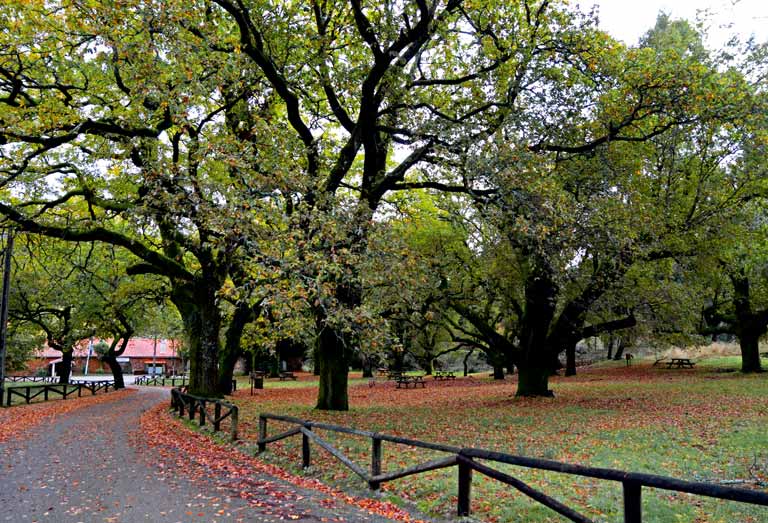SINCE ANYTIME IS GOOD FOR HAVING NEW EXPERIENCES AND VISITING WONDERFUL PLACES, WE SUGGEST THAT YOU ENJOY CASTANHEIRA DE PERA THROUGHOUT THE YEAR.
They’re two twin mountains. Trevim rises to 3953 ft of altitude, as far as the eyes can see, stretching the horizon beyond Coimbra, until the sea of Figueira da Foz. From the top of Cabeço do Pereiro, at 3773 ft, one can see the mountain range from Açor to Estrela.
Collected and stored in wells, the winter snow is used to produce ice, served as ice cream and in cold drinks at the Court and in the taverns of Lisbon. We are in 1786, when Julião Pereira de Castro, the chief snowman of the Kingdom, orders the construction of a chapel devoted to Saint Anthony.
Painted in yellow and purple Spring tones, the hardworking bees go between the gorse and the heather flowers, producing the precious nectar, that carries in the label the Protected Designation of Origin “Mel da Serra da Lousã” (Honey of Serra da Lousã). In the past, there were numerous flocks crossing the slopes of the ridge of Coentral and Lousã. The roast lamb and the “chanfana” (lamb stew) make part of the rich gastronomy of the area, as well as the simmered sprouts and the chestnuts from the abundant chestnut groves of the past. From the wool was weaved the progress of the industry of Castanheira de Pera.
Going down the valley, leaving Santo António da Neve behind, run in Quelhas, below the walkways, the crystal water in waterfalls, that together with those from Cavalete and Coentral enforce the flow of Ribeira de Pera. There are dozens of dams that through the driving force of levadas made move the wheels and the water wheels of old windmills, wine presses, stomps and factories.
In 1881, the wool industry employed roughly 1000 workers, producing high quality fine fabrics, like those from Fábrica dos Esconhais, founded by António Alves Bebiano, Viscount of Castanheira de Pera, in addition to the “buréis”, “surrobecos”, blankets, shawls and bonnets.
Using the most modern textile technology, Albano Morgado S.A. keeps the secular tradition of wool transformation in the area. And it is still in Castanheira de Pera that are being produced, in the old circular centenary loom, a living inheritance of the industrial archaeology that the municipality wishes to transform into a museum, the traditional wool bonnets: the green one, of the “Campino” (herder on horse) from Ribatejo and the black one from the fisherman, but also used by shepherds and peasants of former times, as we see in the ethnographic portraits of traditional costumes and in the dance of folklore.
In this land of charms, the legends are history and name of the places. Running away from the cloister of the Castle of Arouce (Lousã) was Princess Peralta in pursuit of her lover, when the misfortune of death took the life of her handmaid. From the epitaph engraved in the broken tombstone there is only Pera – not the fruit but from the name of the Princess.
Leaving the village of Pera and according to the tradition, the most ancient of the river valley with the same name, we get to Bolo, in time for a refreshing swim in the River Beach of Poço Corga. If you like rippling water and a lot of fun, Praia das Rocas is an oasis in the hills, less than 50 miles from the sea!
Should you prefer the green of nature, venture yourself on the pedestrians’ trails and walks between Serra and Ribeira or let yourself be surprised by the magnificent sound landscapes of the deer roars in the middle of Autumn.
Should you appreciate the calmness of enjoying a good book in open air, enjoy the light, the smell and the sounds of Jardim da Casa da Criança Rainha D. Leonor, after visiting the exhibition room in Casa do Tempo nearby, and a walk through the picturesque streets of the village, before or after diner. Chef’s suggestion: codfish “tibornada” with well soaked olive oil from the traditional press oil of Bolo.













